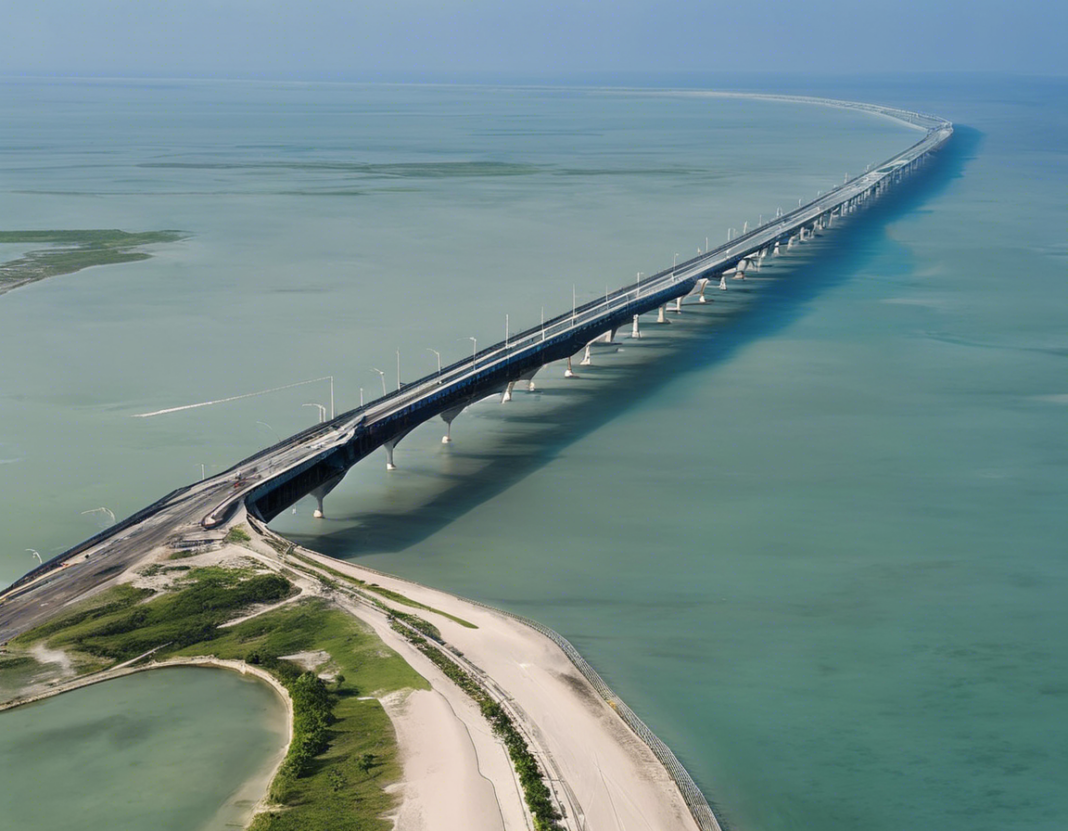Imagine a bridge that spans an ocean, connecting two countries, standing as a testament to ancient engineering marvels. That’s the Ram Setu Bridge, also known as Adam’s Bridge. This chain of limestone shoals stretches between the Indian mainland and the island nation of Sri Lanka. The circumstances surrounding this extraordinary structure have sparked debates among historians, archaeologists, and scientists for centuries.
The Legend of Ram Setu Bridge
In Hindu mythology, the Ram Setu Bridge is believed to have been built by an army of monkeys led by Lord Rama, as described in the epic Ramayana. According to the text, Lord Rama constructed this bridge to rescue his wife, Sita, from the demon king Ravana who had abducted her and taken her to Lanka (modern-day Sri Lanka). The bridge enabled Lord Rama’s army to cross the sea and defeat Ravana, ultimately leading to the triumph of good over evil.
Geological Formation Theories
1. Natural Formation: Some scientists argue that the formation of the Ram Setu Bridge is a natural occurrence, citing the shifting sands, coral reefs, and sedimentation over millions of years. They suggest that the bridge is a series of sandbars formed by sedimentation and coral reefs, which eventually solidified to create a land bridge.
2. Man-Made Structure: On the other hand, proponents of the man-made structure theory point to the alignment of the bridge with the ancient texts, the presence of submerged man-made artifacts, and the composition of the bridge materials (coral and sand, rather than basalt rocks found in the region) as evidence of human intervention in its construction.
Scientific Studies and Controversies
Over the years, several scientific studies have been conducted to unravel the mysteries of the Ram Setu Bridge. While some studies have supported the natural formation theory, others have pointed towards the possibility of human involvement in its construction. The controversy surrounding the bridge has only deepened with conflicting findings and interpretations.
Underwater Archaeological Discoveries
In recent years, underwater exploration and satellite imaging have revealed intriguing findings related to the Ram Setu Bridge. Submerged man-made structures, including a possible ancient port, have been discovered beneath the waters surrounding the bridge. These discoveries have fueled further speculation about the origins and purpose of the bridge.
Environmental and Cultural Significance
The Ram Setu Bridge holds immense environmental and cultural significance for the people of India and Sri Lanka. It serves as a symbol of shared heritage and mythology, attracting pilgrims and tourists from around the world. The preservation of this ancient structure is not only a matter of historical importance but also a testament to the enduring cultural connections between the two nations.
Conservation Efforts and Future Prospects
As debates continue about the origins of the Ram Setu Bridge, efforts are being made to preserve and protect this unique structure. Conservation initiatives aim to safeguard the natural and cultural heritage of the bridge while promoting sustainable tourism and research. The future of the Ram Setu Bridge lies in finding a balance between exploration, preservation, and reverence for its historical and mythological significance.
Frequently Asked Questions (FAQs)
1. Is the Ram Setu Bridge a natural formation or a man-made structure?
The debate continues among scientists and historians, with conflicting theories supporting both natural and man-made origins of the bridge.
2. What materials make up the Ram Setu Bridge?
The bridge is primarily composed of limestone shoals, sand, and coral, which differ from the basalt rocks typically found in the region.
3. Are there any archaeological remains associated with the bridge?
Recent underwater explorations have uncovered submerged man-made structures and artifacts, hinting at possible human involvement in its construction.
4. How old is the Ram Setu Bridge?
The exact age of the bridge is a subject of speculation, with estimates ranging from thousands to millions of years old.
5. Why is the Ram Setu Bridge significant in Hindu mythology?
The bridge is an important element in the epic Ramayana, serving as the link between India and Sri Lanka in the story of Lord Rama’s quest to rescue Sita.
6. What are the preservation efforts being undertaken for the Ram Setu Bridge?
Conservation initiatives focus on protecting the natural and cultural heritage of the bridge while promoting sustainable tourism and research.
7. Can tourists visit the Ram Setu Bridge?
While there are restrictions on direct access to the bridge due to its religious and cultural significance, tourists can view it from nearby locations in both India and Sri Lanka.
In conclusion, the Ram Setu Bridge stands as a symbol of ancient myths, historical mysteries, and cultural connections between two nations. Whether natural phenomenon or human creation, the bridge continues to intrigue and inspire further exploration and conservation efforts for generations to come.

